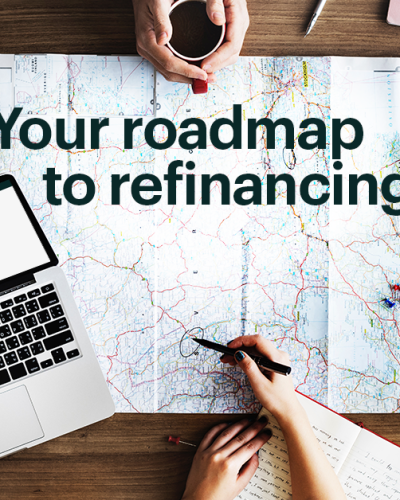Rates have dropped to historically low levels, now is a great time to refinance. If you are thinking of refinancing, the process is pretty similar to when you first got your mortgage. Here’s a step-by-step timeline of what you can expect.
1. Go shopping
The first step is to find the best loan and lender for your needs. Here are some things to consider as you explore your refinance options:
- Type of refinance: rate-and-term or cash-out are the most common
- Type of loan: most lenders offer adjustable-rate or fixed-rate mortgages
- Term: the length of your new mortgage
- Rate: You can check today’s rates and see how you much you might save with a refinance calculator.
- Credits vs. points: You can take credits to offset closing costs or pay points up front to lower your rate.
- Closing costs: Like with your original mortgage, you’ll have third-party, property-related, and lender fees.
Before moving forward with any lender, you should get an official Loan Estimate (LE), which is a standard document that provides a clear and concise summary of all the features, costs, and risks associated with your new mortgage.
2. Lock your rate
Once you’ve chosen your lender, the next step is to lock your rate. That means your lender will commit to honoring that day’s rate options, even if rates go up later. Mortgage interest rates can fluctuate daily based on how the market is doing, so locking your rate protects you from these fluctuations going forward.

3. Submit documents
Next, you have you upload your financial documents. You’ll typically be asked to provide:
- 2 years of personal tax returns
- 2 years of business tax returns (if you own more than 25% of a business)
- 2 years of W-2s or 1099s
- 2 months of bank statements
- Proof of any alimony or child support payments
4. Underwriting and follow-ups
Once everything has been submitted, the underwriting team will work to review everything, typically in 3 days or less. Your lender will get back to you with any additional conditions or requirements and to answer questions and make sure they have all the documents for your specific financial situation.
5. Final approval
Once all the final documentation is in, a final check is done to make sure absolutely everything is in order. You will be notified that underwriting is complete and that it’s time to set a signing date.
7. Signing Loan Docs
After approval, the doc drawer draws your loan documents and sends them to the title company. The title company will set an appointment to meet with you to review and sign the paper work.
You will need to bring your ID. The escrow officer will review the documents and make sure that your note is consistent with what was promised to you, such as the rate, the term, and costs. Once you sign and the documents are notarized the title company returns your paperwork to the lender and you are all set for funding.
7. Closing and funding
After reviewing the documents to ensure they were completed properly and some last minute final checks, your file goes to the funding department and they wire your loan to the escrow company.
The escrow company pays off your old loan and records the new trust deed in its place. You now have completed your refinance and will need to cancel any automatic payment programs for your old loan and set them up for your new lender.






